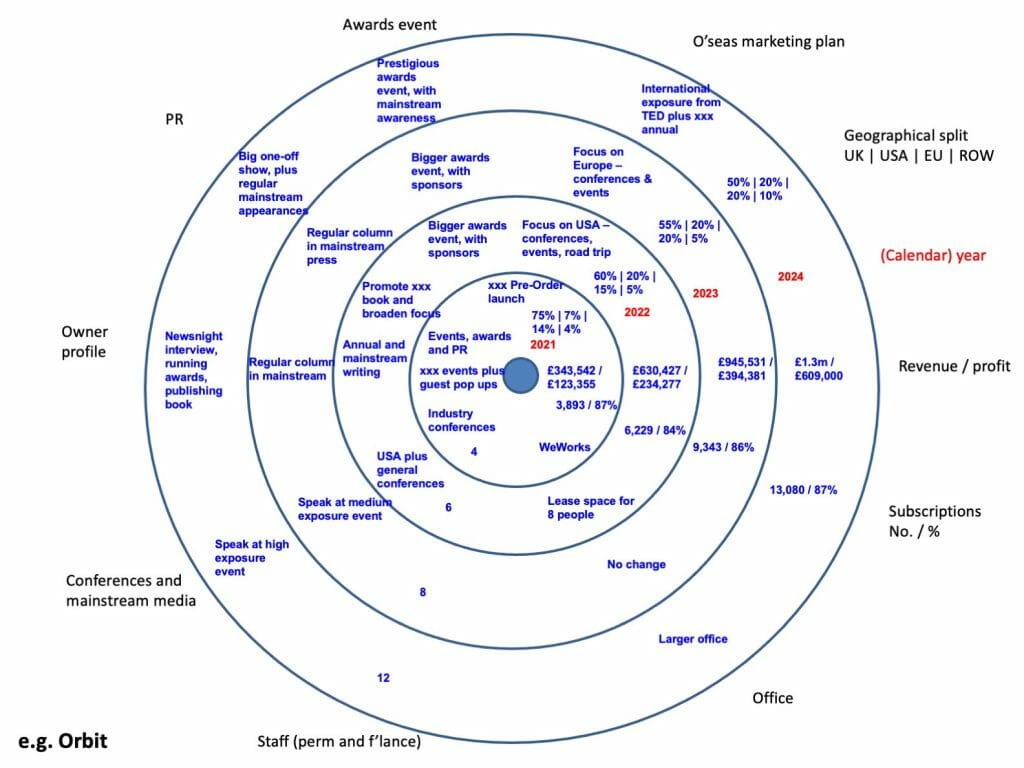In preparing for battle I have always found that plans are useless, but planning is indispensable” attrib. Dwight D. Eisenhower, 1962
Often businesses or careers find themselves following a path of organic development or growth. A journey that is good enough to stay on, without necessarily being the ideal one. Of course circumstance and serendipity can intervene and many of the best opportunities are unexpected. But there is value in following a path that has been chosen rather than one that just happens.
Above all, this is because you tend to get to where you’re trying to get to. Motor racers call this target fixation: you naturally go to the point that you’re looking at (and if it’s the wrong point you’ll go there too). And your intuition is often a poor judge of where the next step should be; racers learn to follow conscious learnt behaviours rather than using their instincts in an emergency.
The point about organic growth is that it tends to make intuitive sense to us – do a bit better, earn a bit more – so we keep doing it. But if over time this is not satisfactory, I use a three year planning tool that works for individuals as well as small and large enterprises.
Orbit
The UK government’s Department for Business, Innovation and Skills (BIS) developed Orbit as part of the Growth Accelerator scheme which helped high potential small and medium sized companies. There are three key stages 1. Creating a framework 2. Setting long and then short term objectives 3. Prioritisation of the Vital Few.
When I take clients through this process, depending on their situation, it might take anything from an afternoon to a few months. It works well as a collaborative process and often forces management teams to address fundamental questions about their business and what they want it to achieve. They key output of a one page diagram is often put up on the wall and referred to over time and then perhaps revisited and re-worked on an annual basis.
I remember one of the first clients I used it with doing a review after three years and they being amazed to realise that things that had seemed beyond reach had in fact been delivered. In their case it was landing six-figure clients – with hindsight the progress made sense, although when they’d set that goal it was way ahead of where they were at the time.
Of course it helps to do this exercise with someone like me, but you can follow the three steps yourself, following the guide here.
1. Creating a framework
The process begins by deciding what are the key measurable things that will determine future success. Things like, revenue, profit, customer numbers, market share which are common to many businesses, but also things specific to your business. This might be a re-location, setting up a new facility or developing a particular type of marketing.
Some of these key variables will be ‘hard’ and allow for clear numerical targets. Others might be ‘soft’ (or less tangible) and need benchmarking. One of my clients saw they could be getting good exposure by a more deliberate approach to PR, and set themselves a goal to be interviewed on Newsnight as an industry expert (which they ultimately did).
Once determined these targets will create the first version of Orbit and look something like this:

2. Setting long and then short term objectives
The next stage is to set the point you’ll be at on each of these key lines. Habit might suggest that we begin with the near future then plan out from there, but this is to lapse into an organic development state of mind. Instead, we begin with the end. Hence appearing on Newsnight was the measure for year 3 rather than year 1, something that seemed unachievable in the immediate future but was a realistic goal of where they wanted their PR effort to be in the longer term. Once you’ve set the stretching targets for year three, you plan backwards to the present day and set out a path of measures that will lead to your ultimate destination.
This is time also for sense check, to make sure that the path you’re setting is the right side of challenging but also credible.
Once completed you have something like this:

3. Prioritisation of the Vital Few
Having created the overall framework of measures and activities that will get you to where you want to be, you need to prioritise. Which three of these lines will be the tent poles that hold the overall strategy up and without which it would fall apart? Often this shows up a discrepancy between your current immediate priorities, which are often driven by operations, and an alternative which will drive strategic change.
Once you’ve pulled out the three most important measure these become your Vital Few. Further work is done to flesh these out further as these will be your priorities for action in the immediate future. They could become the focus of some coaching, to get activity going now. Sometimes these priorities will be things that were previously on a lower priority, things to get round to but never as important as ongoing operations which keep being the focus of attention. I had one client who decided they wanted a shop as part of their business in the longer term. Their key short term priorities were therefore to research and become knowledgeable about leasing and furnishing commercial premises. Since they were a graphic designer this was a completely new area of activity for them, but by engaging with it, they built the platform of knowledge that concluded with them successfully launching their shop.
—
I quoted Eisenhower earlier, pointing out that plans are useless but that planning is essential. Often Orbit will be re-iterated and adjusted as events alter the assumptions behind it. It’s not unusual for goals to be delivered on a longer time frame that expected, but just as common in my experience for it to be the other way round. The key is to develop a sense of destination so that individually or collectively there is a goal in place: over time, once you know where you’re heading you can work to get there.

